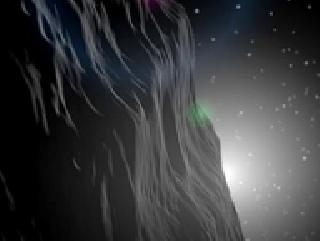
A NASA photo.
PASADENA (BNS): Vesta, the grand old asteroid of our Solar System, resembles more to a small planet or Earth's moon than another asteroid, NASA's Dawn spacecraft has found.
Researchers, after examining data collected from Dawn's first orbital analysis of the giant asteroid, now see Vesta as a layered, "planetary building block" with an iron core.
Such a geologic complexity can be attributed to a process that separated the asteroid into a crust, mantle and iron core about 4.56 billion years ago.
The terrestrial planets and Earth's moon were formed in a similar way.
The Dawn data also suggest the presence of a subsurface magma ocean once upon a time on the asteroid.
A magma ocean occurs when a body undergoes almost complete melting, leading to layered building blocks that can form planets. Other bodies with magma oceans ended up becoming parts of Earth and other planets, NASA said.
Another interesting find by the spacecraft was a distinct group of meteorites found on Earth, which, according to the researchers, originate from Vesta. The chemical composition of such meteorites matches those of the rocks on Vesta's surface.
These objects account for about 6 percent of all meteorites seen falling on Earth.
"This makes the asteroid one of the largest single sources for Earth's meteorites. The finding also marks the first time a spacecraft has been able to visit the source of samples after they were identified on Earth," NASA said.
The US space agency launched Dawn in September 2007 to unravel the mysteries of Vesta - the second most massive asteroid in our Solar System and believed to have survived from the early phase of planet formation approximately 4.5 billion years ago. Almost all other asteroids of comparable size either accumulated to form planets or broke apart due to violent collisions.
Dawn rendezvoused with the massive asteroid in mid-2011.
After completing its orbital missions, Dawn will depart Vesta on August 26 to embark on its second phase of voyage to explore dwarf planet Ceres where it will arrive in 2015.
 Previous Article
Previous Article












The Indian Air Force, in its flight trials evaluation report submitted before the Defence Ministry l..
view articleAn insight into the Medium Multi-Role Combat Aircraft competition...
view articleSky enthusiasts can now spot the International Space Station (ISS) commanded by Indian-American astr..
view article